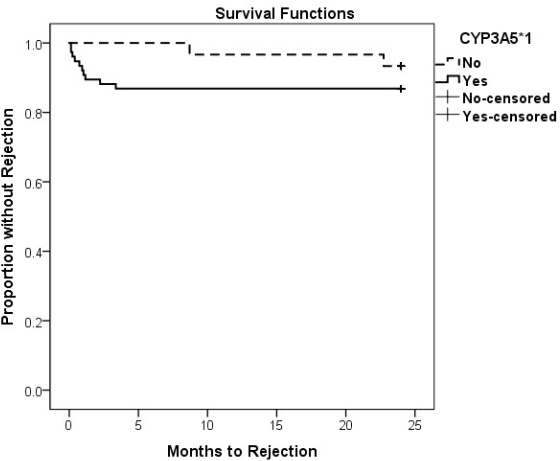Prevalence and Impact of CYP3A5 Genomic Variances on Clinical Outcomes among African-American Kidney Transplant Recipients
1Vidant Medical Center, Greenville, NC
2East Carolina University, Greenville, NC.
Meeting: 2018 American Transplant Congress
Abstract number: 434
Keywords: African-American, FK506, Immunosuppression, Kidney transplantation
Session Information
Session Name: Concurrent Session: Kidney Immunosuppression: General Considerations - 1
Session Type: Concurrent Session
Date: Tuesday, June 5, 2018
Session Time: 2:30pm-4:00pm
 Presentation Time: 3:06pm-3:18pm
Presentation Time: 3:06pm-3:18pm
Location: Room 6C
Introduction: Kidney transplantation in African American (AA) recipients continues to demonstrate inferior outcomes when compared with other race/ethnicities. Contributing factors encompass differences in pharmacogenomics, and variances in PK/PD of immunosuppressant therapy. The concept of genotyping patients in solid organ transplantation is gaining interest as little is known about the impact of CYP3A5 polymorphisms on transplantation outcomes among AA kidney transplant recipients (KTRs).
Methods: A single center retrospective cohort study of all 162 adult KTRs over a 24 month period who received oral tacrolimus (TAC) as part of maintenance immunosuppression were analyzed for prevalence of CYP3A genomic variances with a subanalysis of clinical outcomes in the AA cohort.
Results: 85 patients expressed a CYP3A5*1 variant and 77 patients expressed non-*1 variants. The CYP3A5*1 group was predominantly AA (93%, p≤0.0005). Among the 106 strictly AA subgroup, in CYP3A5*1 expressers compared to nonexpressers, the incidence of BPAR was significantly higher in the first 6 months (13% vs 0%; P = .016) compared to 24 months (13% vs 7%; P = .521). TAC total daily dose at first therapeutic level was significantly higher in CYP3A5*1 expressers (12 mg/day) compared to nonexpressers (8 mg/day; P < .001). Compared to CYP3A5*1 nonexpressers, DGF incidence was significantly higher among CYP3A5*1 expressers (27.6% vs 6.7%; P = .006). By contrast, median GFR was significantly higher in CYP3A5*1 expressers compared to nonexpressers (54.5 mL/min vs 50.0 mL/min; P = .003) at 24 months.
Conclusion: We confirm that AA are the predominant expressers of the *1 variant and suggest that AAs with CYP3A5*1 expression require 50% more TAC and have an increased incidence of DGF and acute rejection.

CITATION INFORMATION: Maldonado A., Hudson S., Rebellato L., Asempa T. Prevalence and Impact of CYP3A5 Genomic Variances on Clinical Outcomes among African-American Kidney Transplant Recipients Am J Transplant. 2017;17 (suppl 3).
To cite this abstract in AMA style:
Maldonado A, Hudson S, Rebellato L, Asempa T. Prevalence and Impact of CYP3A5 Genomic Variances on Clinical Outcomes among African-American Kidney Transplant Recipients [abstract]. https://atcmeetingabstracts.com/abstract/prevalence-and-impact-of-cyp3a5-genomic-variances-on-clinical-outcomes-among-african-american-kidney-transplant-recipients/. Accessed December 14, 2025.« Back to 2018 American Transplant Congress
